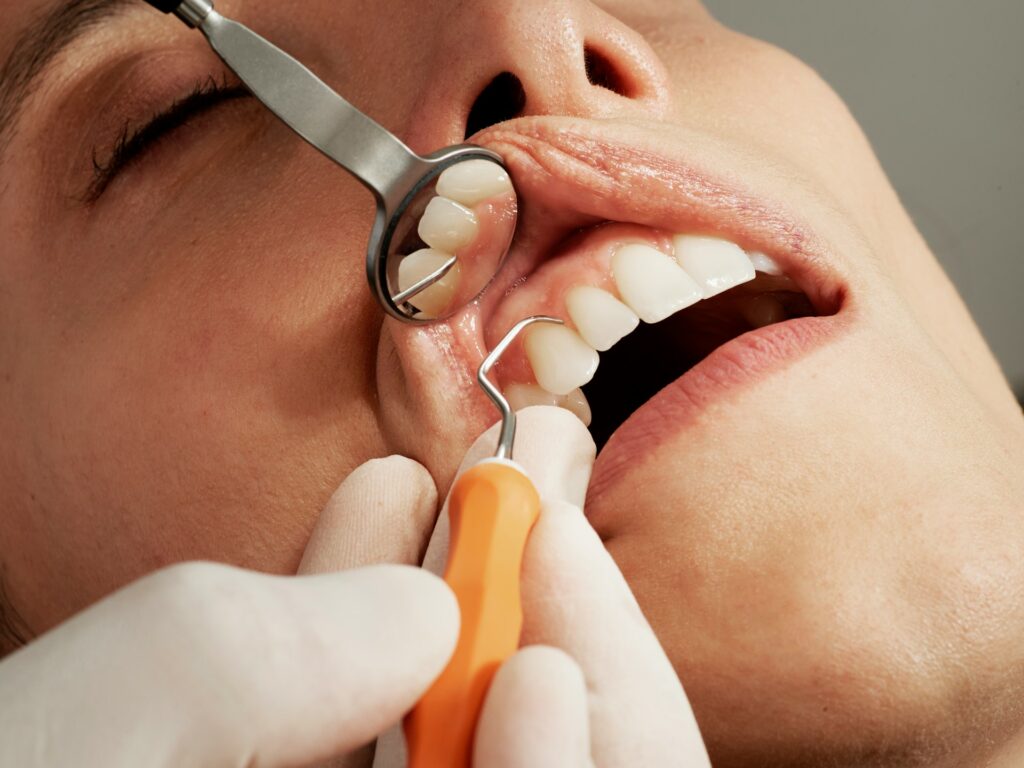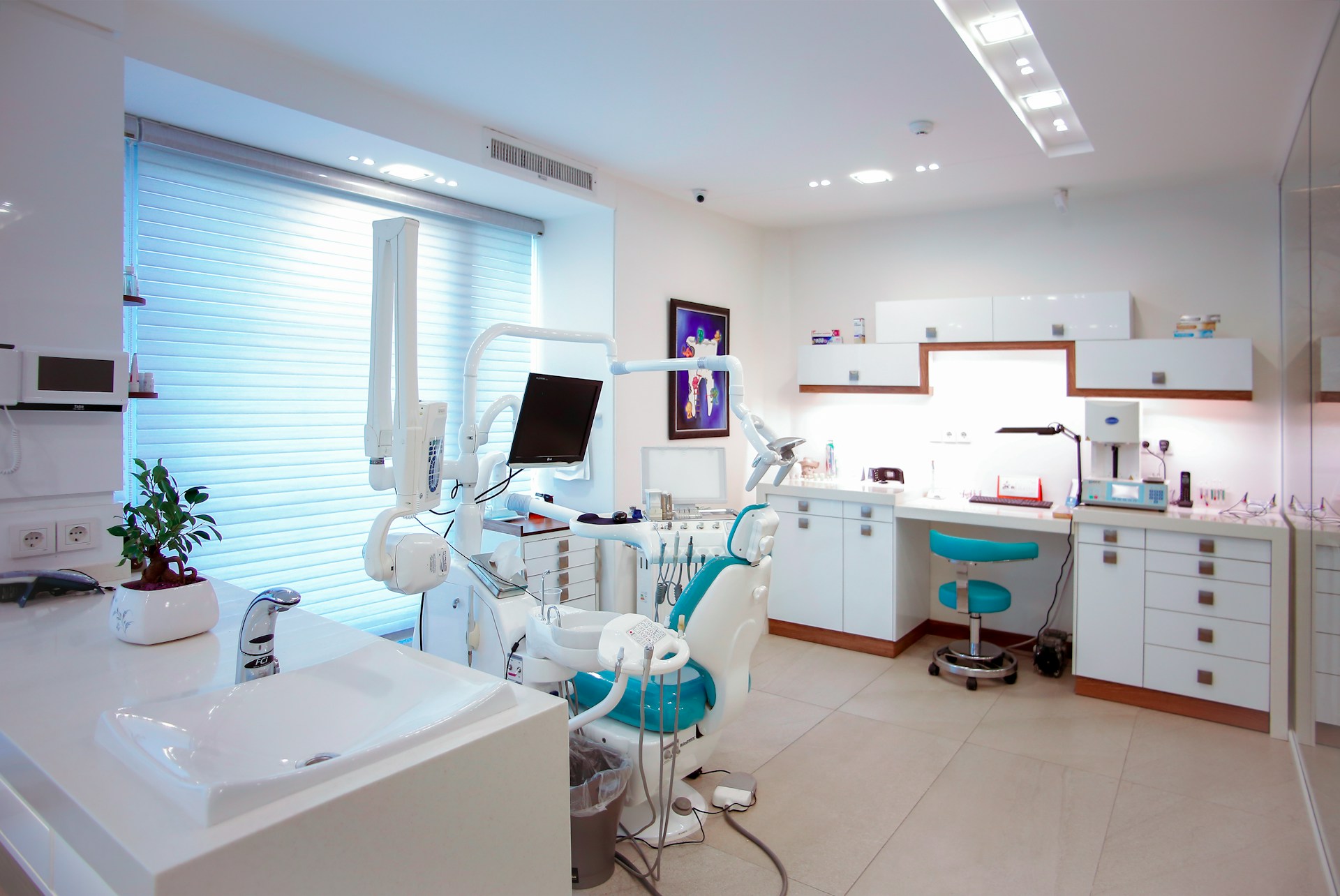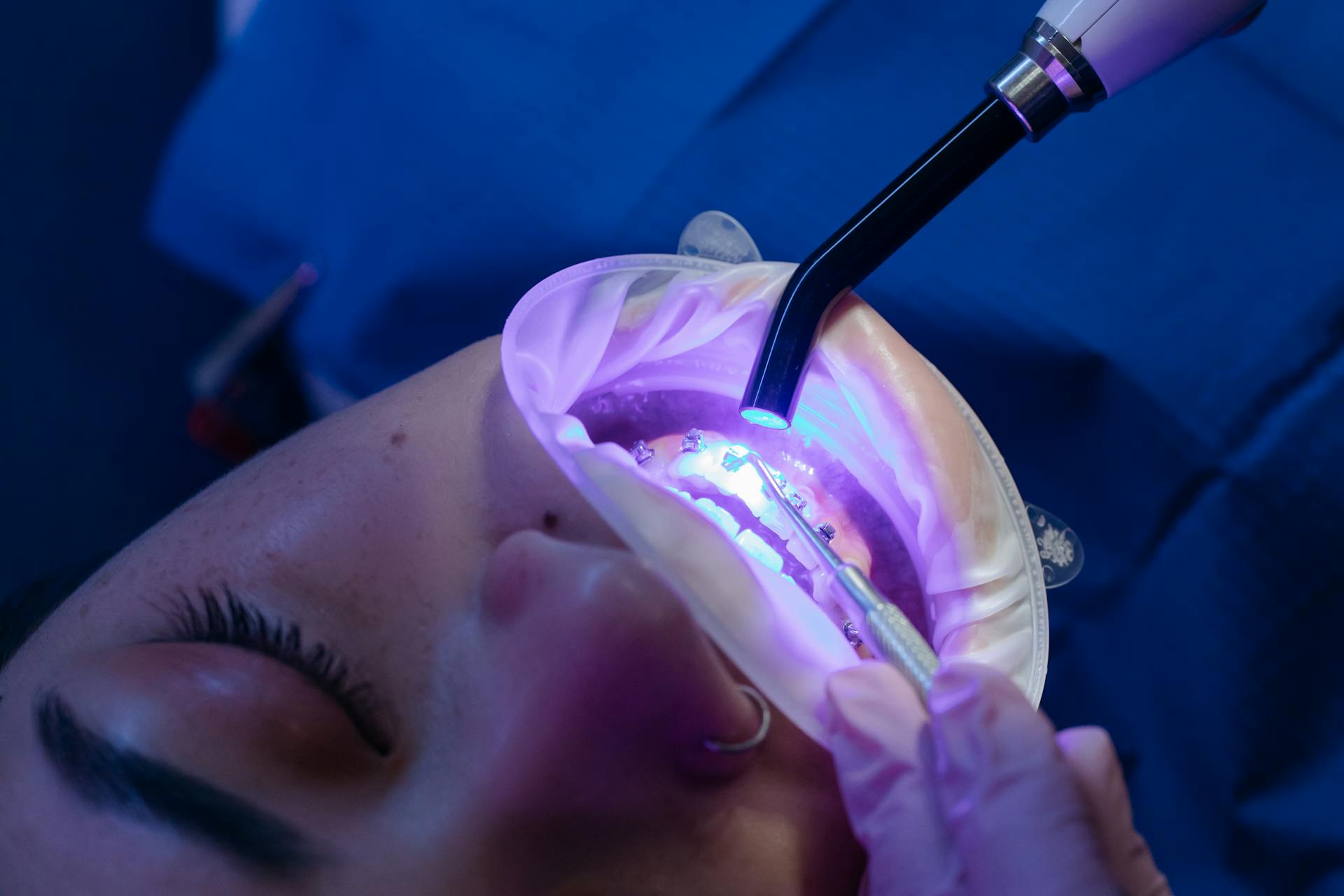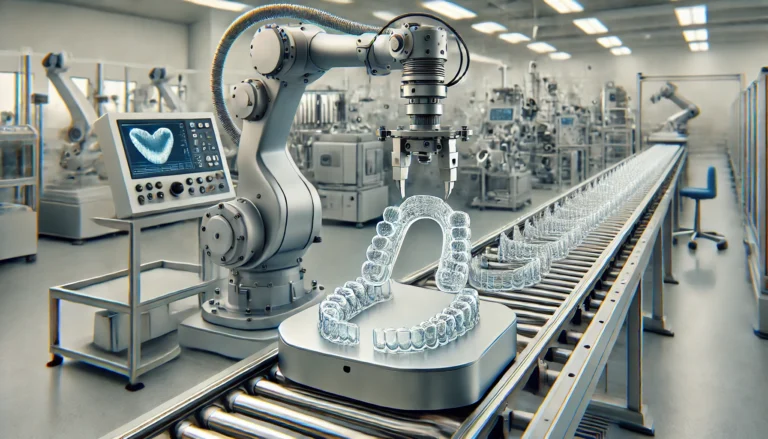
Invisalign has transformed orthodontic treatment, providing a discreet and comfortable alternative to traditional braces. With advantages such as a nearly invisible appearance, a customised fit, and faster treatment times, many individuals are now considering this contemporary method for straightening teeth. But is Invisalign covered by dental insurance in the UK?
Understanding the financial aspects can be quite challenging. This article delves into the benefits of Invisalign, its coverage under dental insurance in the UK, the price of Invisalign, and potential alternatives, all aimed at helping you make an informed decision about your dental journey.
What are the Benefits of Invisalign?

Invisalign presents a range of benefits that contribute to its popularity among patients pursuing orthodontic treatment. Its nearly invisible appearance allows individuals to straighten their teeth effectively without the inconvenience associated with traditional metal braces.
Many patients find the comfort and removability of clear aligners particularly advantageous, especially for those with busy lifestyles. Moreover, Invisalign is tailored to meet the unique needs of each patient, ensuring that specific alignment issues are addressed while also promoting overall dental health.
The flexibility in treatment options, combined with a shorter treatment duration, further enhances the appeal of this innovative aligner technology.
1. Nearly Invisible Appearance
One of the most notable features of Invisalign is its nearly invisible appearance, which makes it an appealing choice for those seeking cosmetic dentistry without the drawbacks associated with traditional braces.
This discreet quality not only enhances the overall aesthetic during the treatment process but also significantly boosts patient confidence, allowing individuals to engage more freely in social interactions. People can smile, laugh, and communicate without the self-consciousness that often comes with metal brackets and wires.
The benefits of these aesthetic treatments go beyond mere appearances; they foster a sense of give the power toment, encouraging individuals to express themselves fully in both personal and professional environments.
With a clear aligner that effortlessly integrates into one’s lifestyle, the transformation feels natural, reinforcing the idea that one can achieve a beautiful smile without sacrificing comfort or style.
2. Comfortable and Removable
Invisalign aligners are thoughtfully designed for comfort, allowing patients the convenience of removing them easily when eating, brushing, and flossing. This functionality promotes better dental health.
This distinctive feature sets Invisalign apart from traditional braces, which can often present challenges during meals and oral hygiene routines. By allowing users to maintain their regular oral care practices without interruption, these aligners help prevent plaque build-up and cavities, ultimately fostering a healthier smile throughout the treatment process.
Many patients appreciate that the smooth plastic of Invisalign eliminates the discomfort commonly associated with metal brackets and wires, leading to a more pleasant orthodontic experience overall. As a result, individuals can enjoy their favourite foods while keeping their teeth and gums in excellent condition, which in turn enhances their confidence during treatment.
3. Customised for Each Patient
Invisalign treatment begins with a thorough orthodontic consultation, during which dental professionals develop a customised treatment plan designed specifically for each patient’s alignment issues.
This personalised approach ensures that all aspects of the patient’s dental needs are considered, ranging from the severity of their misalignment to their individual lifestyle preferences.
By examining digital scans and imaging, the orthodontist can formulate a strategy that not only addresses teeth alignment but also takes into account the overall dental health and aesthetic goals of the patient.
Such detailed customisation is essential, as it leads to more effective outcomes, enhances patient satisfaction, and supports a smoother path towards achieving that ideal smile.
Ultimately, personalised treatment plans help to minimise discomfort and aim for quicker results, making the experience much more pleasant for individuals undergoing orthodontic care.
4. Faster Treatment Time
One of the attractive features of Invisalign is its typically quicker treatment time when compared to traditional orthodontic options, which often leads to faster smile transformations.
This efficiency not only enhances the aesthetic appeal of a patient’s smile but also significantly contributes to their overall satisfaction with the treatment process. Many patients appreciate the fact that a shorter treatment duration can result in fewer clinic visits and less disruption to their daily routines.
However, the speed of treatment can be influenced by various factors, such as the complexity of the dental issues being addressed, the patient’s adherence to wearing the aligners as instructed, and the frequency of dental visits for monitoring progress.
Ultimately, striking the right balance between treatment length and patient satisfaction can also affect the overall cost of orthodontic care, making it an important consideration for both patients and practitioners.
Is Invisalign Covered by Dental Insurance in the UK?
When evaluating Invisalign options in the UK, many patients often have questions about insurance coverage, particularly in relation to private dental insurance and NHS plans.
Understanding these aspects is crucial, as they can significantly influence the overall cost of treatment.
1. Private Dental Insurance Coverage
Private dental insurance frequently provides coverage for Invisalign, but the level of coverage can differ depending on the specific insurance policy and dental benefits offered.
To effectively comprehend and navigate these policies, it is essential for individuals to carefully examine the terms outlined in their particular plan. It is advisable to consider factors such as the number of sessions covered, any waiting periods that may apply, and the out-of-pocket maximums or limitations.
Common inquiries regarding insurance often revolve around what constitutes medically necessary treatment and whether prior approval is required before initiating the Invisalign process. By familiarising themselves with the intricacies of their private dental insurance, patients can make informed decisions that align their orthodontic aspirations with the benefits available to them, ensuring they receive optimal care without facing unexpected financial burdens.
2. NHS Coverage
While the NHS primarily emphasises essential orthodontic treatments for children like braces, it may not cover the costs associated with Invisalign for adults. Therefore, it is important to review specific policies regarding coverage.
This limitation stems from the NHS’s commitment to prioritising treatments that are considered medically necessary rather than purely cosmetic. Adults looking for orthodontic solutions like Invisalign should understand that eligibility for coverage often depends on their particular dental conditions. Certain criteria may allow individuals to qualify for NHS funding, such as severe tooth misalignment or other orthodontic issues that affect oral health.
Consequently, it is essential for prospective patients to thoroughly investigate their insurance coverage, as the details can vary significantly depending on individual circumstances and treatment plans.
What is the Cost of Invisalign in the UK?

The cost of Invisalign in the UK can vary significantly due to several factors. These include the length of the treatment, the complexity of the alignment issues being addressed, and the specific charges made by dental practitioners for their orthodontic services.
1. Factors That Affect the Cost
Several factors contribute to the overall cost of Invisalign, including the severity of orthodontic issues, the length of treatment, and the expertise of the dental professional conducting the assessment.
Additionally, the geographical location of the dental practice can influence pricing; for instance, urban centres often have higher rates due to increased demand. The type of aligners used, the inclusion of follow-up appointments, and any necessary additional dental procedures can also add to the financial commitment.
It is advisable for patients to engage in open discussions with their orthodontists regarding payment plans or insurance coverage options, as this can help alleviate some of the financial burden.
By budgeting for both the treatment and any unexpected expenses, individuals can better prepare themselves financially for the journey towards achieving that perfect smile.
2. Average Cost of Invisalign in the UK
On average, the cost of Invisalign treatment in the UK typically ranges from £3,000 to £5,500. This variation largely depends on the complexity of the case and the dental provider selected.
When compared to traditional braces, which generally range from £2,000 to £4,000, the cost of Invisalign can be notably higher or lower. Many patients find that the advantages of Invisalign aligners, such as their aesthetic appeal and comfort, often justify the investment.
To assist with the financial aspects, there are various payment options available to accommodate different financial situations, including:
- Monthly payment plans
- Interest-free finance
- Insurance coverage that may cover a portion of the costs
Individuals are encouraged to consult with their dental care provider regarding potential financial packages or student discounts, which can help further ease the expenses associated with their orthodontic treatment.
How to Find Out if Your Dental Insurance Covers Invisalign?
Determining whether dental insurance covers Invisalign may seem challenging at first. However, by following a few straightforward steps, you can easily verify your coverage and get a good idea of the claims process.
1. Contact Your Insurance Provider
The first step in verifying insurance coverage for Invisalign involves directly contacting your insurance provider. They can address any specific questions you may have regarding your coverage.
During this conversation, it is essential to clearly indicate that you are inquiring specifically about Invisalign, as dental insurance plans can vary widely. Be sure to ask about the percentage of the treatment that is typically covered, any annual maximums that may be in place, and whether there are specific in-network providers you are required to use.
It is also advisable to inquire about any pre-approval processes or necessary documentation. As you engage in this discussion, take note of the names of the representatives you speak with, the date of the conversation, and the details of the information provided. This documentation can prove invaluable should any disputes arise later on.
2. Check Your Plan Coverage
Reviewing your dental insurance plan coverage is an essential step in understanding what portion of your Invisalign treatment may be covered, as well as any potential limitations on that coverage.
To navigate this process effectively, it is advisable to begin by carefully examining the specifics of your policy, paying close attention to the requirements related to orthodontic treatments.
It is crucial to determine whether the plan categorises Invisalign as a covered service, since not all dental insurance providers offer comprehensive coverage for aligners.
Additionally, reviewing any annual maximums, waiting periods, and exclusions can provide clarity on the financial assistance available to you. Understanding these key components will not only help in budgeting for your treatment but also assist in selecting the right provider who aligns with the stipulations of your insurance.
3. Speak with Your Orthodontist
Your orthodontist can offer valuable insights into insurance coverage by assessing your specific situation and recommending potential financing options for Invisalign treatment. They can also provide guidance on the best age to start Invisalign, helping you determine whether it’s the right time for you or your child to begin the treatment.
Maintaining open communication with the orthodontic team is crucial when navigating the often intricate world of insurance, payment plans, and timing for orthodontic care. By discussing your individual needs, financial circumstances, and treatment goals, you can receive personalised advice that clarifies what your insurance covers and when it’s most beneficial to begin Invisalign.
This conversation ensures that you fully understand all available patient financing solutions and the optimal timing for starting treatment, making your orthodontic journey smoother. Engaging with the office about financial options and treatment plans not only reduces stress but also empowers you to make informed decisions.
In the end, a collaborative approach with your orthodontist can create a more convenient and affordable pathway to achieving that perfect smile.
What are the Alternatives to Invisalign in the UK?

Invisalign is indeed a prominent option when it comes to clear aligners; however, there are several effective alternatives available in the UK for individuals interested in orthodontic solutions for teeth straightening.
1. Traditional Metal Braces
Traditional metal braces continue to be a popular choice for comprehensive orthodontic treatment, offering a proven method for effectively correcting alignment issues. These braces are often preferred for their reliability and their ability to address a wide range of dental misalignments, from simple crowding to more complex bite problems.
However, it is essential to consider the aesthetic aspect, as traditional braces can be quite noticeable, which may be a concern for some individuals. On the other hand, clear aligners like Invisalign provide a more discreet alternative, allowing users to straighten their teeth without the visibility of metal.
Both options have their advantages, so it is important for patients to weigh the effectiveness and treatment duration associated with metal braces against the comfort and aesthetics offered by clear aligners. Ultimately, the decision should reflect what best fits their lifestyle and dental needs.
2. Ceramic Braces
Ceramic braces present a more aesthetically pleasing alternative to traditional metal braces, utilising tooth-coloured materials that seamlessly blend with the natural colour of one’s teeth. This innovative orthodontic treatment allows individuals to straighten their teeth discreetly, ensuring that their smile remains the focal point throughout the alignment process.
Many patients find the reduced visibility of ceramic braces particularly appealing, especially in social or professional environments where appearance is significant. Although the cost of ceramic braces may be slightly higher than that of conventional metal options, the added comfort and visual appeal make them a worthwhile investment.
Not only do ceramic braces effectively address various dental issues, but they also enhance overall functionality and boost confidence by fostering a beautiful, harmonious smile.
3. Lingual Braces
Lingual braces present a distinctive option for individuals seeking a completely hidden orthodontic solution, as they are positioned on the back of the teeth, rendering them virtually invisible. This discreet placement enables individuals to pursue orthodontic treatment without drawing attention to their dental work, making it an appealing choice for both adults and teenagers who may feel self-conscious about their appearance during the alignment process.
Just like traditional braces, lingual braces effectively address a range of dental issues, including overcrowding and misalignment. However, patients might face some challenges, such as adjusting to changes in speech and experiencing initial discomfort.
While lingual braces offer aesthetic benefits compared to clear aligners, they may require more frequent adjustments and could result in a longer treatment duration. Ultimately, the decision between lingual braces and other orthodontic options, such as clear aligners or traditional metal braces, hinges on personal preferences, lifestyle considerations, and specific alignment requirements.
4. Removable Clear Aligners
Similar to Invisalign, there are several other brands of removable clear aligners available, providing patients with discreet and comfortable options for addressing alignment issues.
Brands like ClearCorrect, Smile Direct Club, and Byte each offer unique features and benefits tailored to various orthodontic needs.
For example, ClearCorrect is recognised for its customisable treatment plans, which cater to both minor and complex alignment challenges. In contrast, Smile Direct Club presents a more budget-friendly alternative, complete with virtual consultations.
Byte sets itself apart with its rapid treatment process, thanks to innovative technology, making it an appealing choice for individuals seeking quicker results.
Overall, these brands highlight flexibility and effectiveness, allowing individuals to find a solution that aligns with their lifestyle and budget.
Frequently Asked Questions
Is Invisalign covered by dental insurance in the UK?
No, Invisalign is not typically covered by dental insurance in the UK.
Do any dental insurance plans cover Invisalign in the UK?
While it is uncommon, some dental insurance plans may offer partial coverage for Invisalign in the UK. It is important to check with your specific insurance provider for more information.
Are there any alternative options for insurance coverage for Invisalign in the UK?
Yes, some dental discount plans may offer discounts on Invisalign treatment in the UK. These are not insurance plans, but can provide some cost savings.
Are there any exceptions to Invisalign not being covered by dental insurance in the UK?
In certain cases, Invisalign treatment may be covered by dental insurance in the UK if it is deemed medically necessary. This is determined on a case-by-case basis and may require documentation from your dentist.
Can I negotiate a discounted rate for Invisalign treatment with my dentist if it is not covered by insurance in the UK?
It is always worth discussing potential discounts or payment plans with your dentist for any treatment, including Invisalign. However, it ultimately depends on the policies of your specific dentist and may not always be possible.
Is Invisalign covered by the National Health Service (NHS) in the UK?
No, Invisalign is not covered by the NHS in the UK. It is considered a cosmetic treatment and therefore not covered by the NHS.





